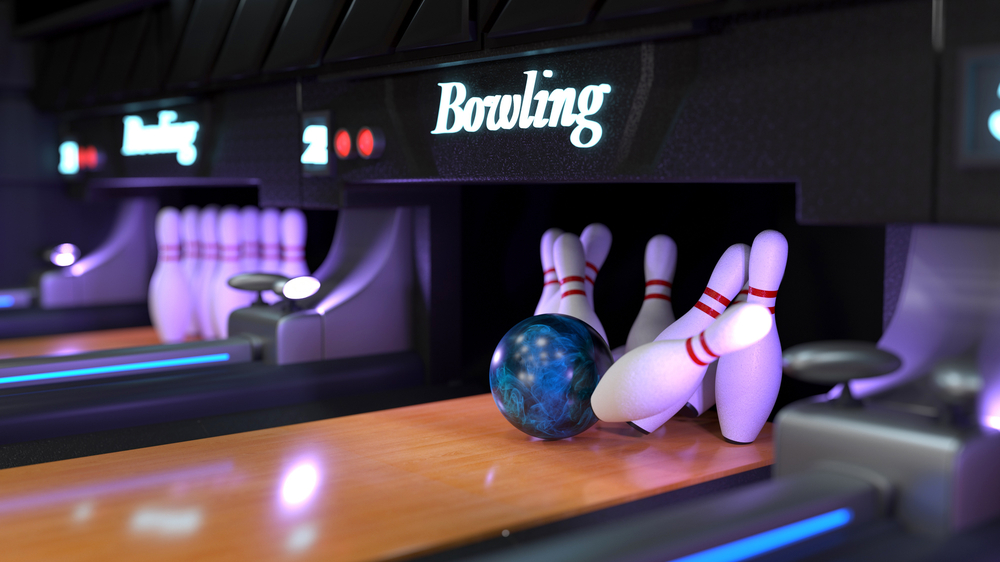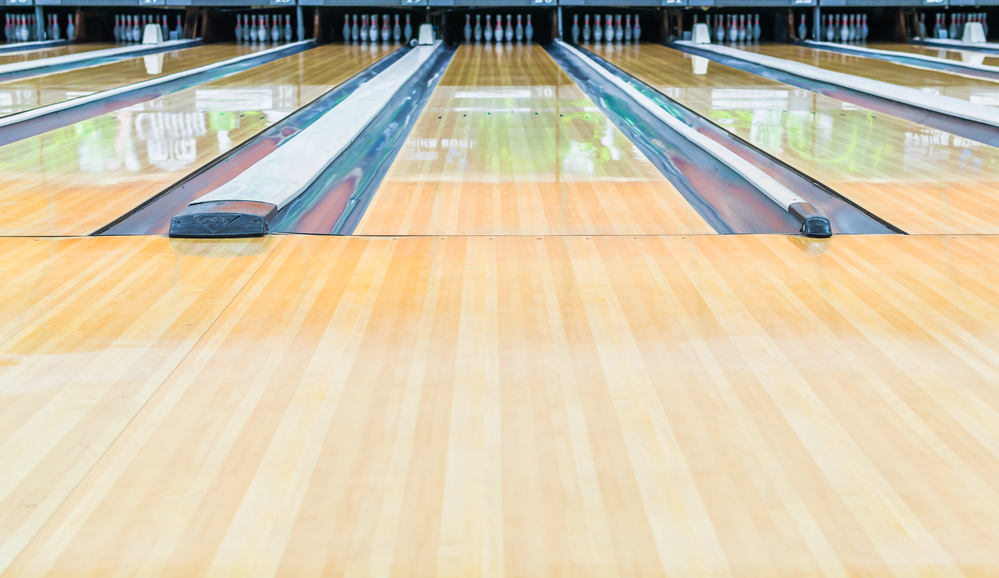
Introductory science classes back in the day likely touched on what terminal velocity meant, so you may (or may not) remember the concept. Typically the velocity of a golf ball is calculated.
Either way, applying it to real-life situations – and especially bowling - can be a real challenge. We can help with that! In this article, we’ll tell you all about the terminal velocity of a bowling ball and how to use that information in your bowling games.
Contents
- 1 Terminal Velocity of a Bowl Ball- What Exactly Is It?
- 2 Factors That Impact the Terminal Velocity of a Bowling Ball
- 3 Terminal Velocity of a Bowling Ball While Bowling
- 4 Determining the Speed of Your Bowling Ball
- 5 Terminal Velocity of a Bowling Ball Calculator
- 6 How to Increase Your Bowling Speed
- 7 How to Decrease Your Bowling Speed
Terminal Velocity of a Bowl Ball- What Exactly Is It?

Simply put, terminal velocity is when the drag force of gravity is proportional to the force of air resistance on an object. A typical example of this is to imagine dropping a bowling ball from the top of a tall building.
At a certain point, the ball will not be moving on its own accord. Instead, gravity will be the only force pulling it down against air resistance.
When you’re bowling, the maximum speed you’ll have on your ball is at the time of release. After that, the ball will slow down due to the pressure of moving against the air and the friction between the lane and the ball.
Depending on the size and weight of the ball, it can lose an estimated 3mph between when the player releases it and when the ball reaches the end of the lane.
Key Takeaways
- Terminal Velocity in Bowling: Terminal velocity describes the maximum speed a bowling ball can achieve when gravity's pull is balanced by air resistance. During bowling, this concept is vital as it affects the ball's speed from release to pin impact, with the optimal speed being around 16-17 mph at pin impact.
- Factors Affecting Bowling Speed: Lane friction, lane oil patterns, and the ball's weight influence a bowling ball's speed and efficiency. Understanding these elements can significantly enhance a player's performance.
- Optimal Bowling Speed: Studies, including those by the United States Bowling Congress (USBC), suggest the best ball speed at pin impact is 16-17 mph, with a release speed of 20-21 mph, to optimize pin strike potential.
- Measuring Your Bowling Speed: Without advanced technology, you can estimate your bowling ball's speed using a stopwatch and a friend, measuring the time from release to pin impact, aiming for about 2.5 seconds to match recommended speeds.
- Improving Bowling Performance: Increase your bowling speed by adjusting your approach speed, power distribution, and arm swing. Conversely, to decrease speed, slow your approach and adjust your swing. Practice and attention to form can lead to better control and improved game outcomes.
Factors That Impact the Terminal Velocity of a Bowling Ball

Throwing your ball sets off a chain of events that ends with the ball slowing down while, hopefully, striking pins at the end of the lane. Many factors can impact the terminal velocity of your ball, including:
- Lane Friction: When you rub your palms together, you create friction. The same happens when your ball slides down the lane, slowing it down as it goes.
- Oils: All bowling lanes use oils to protect the floor and provide different challenges to bowlers. If you’re bowling and the ball rolls over a dry area of the lane, your ball will slow due to increased friction. The same will happen if your ball hits an area where the lane is slathered in high-viscosity oil.
- Bowling Ball Choice: The kind of ball you use, as well as its weight, can impact the speed of your throw. Your ball determines whether your throw is considered to be slow, average, or fast. Different bowling ball weights do not move down the lane at the same rate.
Each of these factors can make or break a bowler’s game. Therefore, getting to know as much as possible about each and applying what you learn to your future games is essential.
| Factor | Description | Impact on Bowling Ball Speed |
|---|---|---|
| Lane Friction | Caused by the interaction between the ball and the lane surface, similar to rubbing palms together. | Reduces speed as the ball moves. |
| Oils | Used on lanes to protect the surface and provide challenges; viscosity affects ball speed. | High-viscosity oils slow down the ball, while dry areas increase friction and decelerate it. |
| Bowling Ball Choice | The weight and type of ball used. | Heavier balls may travel slower but with more momentum; the ideal speed is around 16-17 mph at pin impact. |
| Optimal Bowling Speed | Recommended speed for the ball to hit the pins, based on USBC studies. | 16-17 mph at pin impact, with a release speed of 20-21 mph. |
Terminal Velocity of a Bowling Ball While Bowling
Bowlers have known for a long time that the entire sport revolves around physics, and the game keeps getting better the more they learn. In fact, you can find a bowling speed chart on display in many alleys today.
In fact, the United States Bowling Congress (USBC) recently conducted a Ball Motion Study to determine the best ball speed while bowling.
The results collected from studies in the field indicated an optimal speed of about 16-17 mph when it hits the pins, and 20-21 mph when the bowler releases the ball.
On average, a bowling ball can take about 2 ½ seconds with minimal room for adjustment to hit the pins at 16.7mph. However, all the above factors can severely impact your ball’s speed and travel time.
Determining the Speed of Your Bowling Ball
While it would be great for all bowling alleys to have all the tech you need to determine your bowling speed, that's typically going to be beyond their budget. However, there are simple ways to figure it out with a bit of help from friends. So to get started, grab a friend, a stopwatch, and your gear, then head to your local alley.
The process of getting your speed calculated is easy.
Your friend will need to start the stopwatch at the exact moment the ball is released from your hand and then stop it precisely when the ball makes contact with a pin. This method allows you to track the amount of time it takes for your ball to get from your hand to the pins.
You can now look at your times to see how close you are to the recommended speed (16-17 mph or about 2.5 seconds) to give you your best performance and, hopefully, score. If you want to translate your times into speed information, you can find charts online or even in your local bowling alley.
Another way to determine your ball speed is to perform video analysis.
Ensure that your shot is recorded from the side so your release and pin impact moment can be easily seen. Start your timer the second you release the ball and stop it when the ball hits the first pin.
Terminal Velocity of a Bowling Ball Calculator
In over to calculate the terminal velocity of a bowling ball, you will need to know the terminal velocity equation and convert your time into your speed. You can find calculators on select bowling sites that allow you to enter a few simple details to get your numbers. There are plenty of apps and tools out there to help you grasp the physics of how you bowl.
How to Increase Your Bowling Speed
Once you’ve worked out your speed, you may find that you need to increase it. Here are a few tips to help you out:
- Start by stepping through your approach at a faster pace. The quicker you move, the faster your motions will follow suit.
- Rely more on your legs for power while relying on your core for stability.
- Practice loosening up your arm swing while being mindful not to stress your shoulder, elbow, and wrist. Aim to throw your ball hard in a loose swing to increase velocity.
- Don’t get distracted. If you’re someone who looks anywhere other than your target during your bowl, refocus. Keep your eyes on the target or fixate on whatever you use to guide your throw. Distractions can lead to poor form and decreased speed.
- Don’t move out of your form too fast. If you’re releasing the ball at the same time as you start to move out of your form, that can throw off your balance resulting in a weak throw. It can also result in unpredictable shots.
You don’t have to get the perfect speed right off the bat. That would be impossible for most people. It will take practice, especially if you’ve already become comfortable in your current form.
Try working on increasing your speed by throwing the fastest bowling balls you can to see how much you can back off of it. Then, as you decrease the speed, you’ll have room to implement any changes you want to make to reach your overall goal.
How to Decrease Your Bowling Speed
You might find that your bowling ball velocity needs to decrease. Here are a few tips for you to try out:
- Slow your approach through the moment of release. Physically slowing will result in a slower throw.
- Begin your approach with one foot forward and hold the ball six inches higher in your stance.
- Don’t swing back as far as you normally would.
When you make small changes to your throw, you should be able to see positive improvement in the overall velocity of your bowling ball. It’s always worth the time it takes to elevate your game.
Related Articles
My Final Words
In sum, understanding the dynamics of bowling boils down to grasping key physics concepts like drag coefficient, mass, and the effects of air resistance on objects in motion. Suppose we drop two objects, a bowling ball, and a feather, in a vacuum where air resistance (fluid density) is nil; they would hit the ground simultaneously. However, in the real world, factors like the cross-sectional area, drag coefficient, and mass of the bowling ball play significant roles in determining its terminal velocity on the lane.
This knowledge, plus understanding practical insights into how lane conditions, ball mass, and the bowler's technique influence the ball's trajectory and speed, offers a comprehensive answer to optimizing your bowling performance. Assuming you adjust for these variables, you can tailor your approach to achieve the ideal fall speed, striking the pins with precision. Understanding these principles isn't just about theory; it's about applying this idea to your game, allowing for more strategic plays and consistent outcomes.
Kira Byrd, a Certified Fraud Examiner, holds a B.S. in Accounting from the University of Alabama at Birmingham. With a passion for bowling from her childhood, Kira has poured her expertise and personal experiences into creating and nurturing Bowling For Beginners. Kira's mission is to meet new bowlers where they are and guide them toward consistently achieving higher scores. With a focus on skill development and strategic techniques, she empowers readers to take control of their game and unlock their true potential.
Bowling For Beginners embodies strict editorial integrity, ensuring reliable and unbiased information. Kira's commitment to delivering valuable insights and practical strategies is reflected in every article. Here's an explanation of our editorial policy and how we get money.




